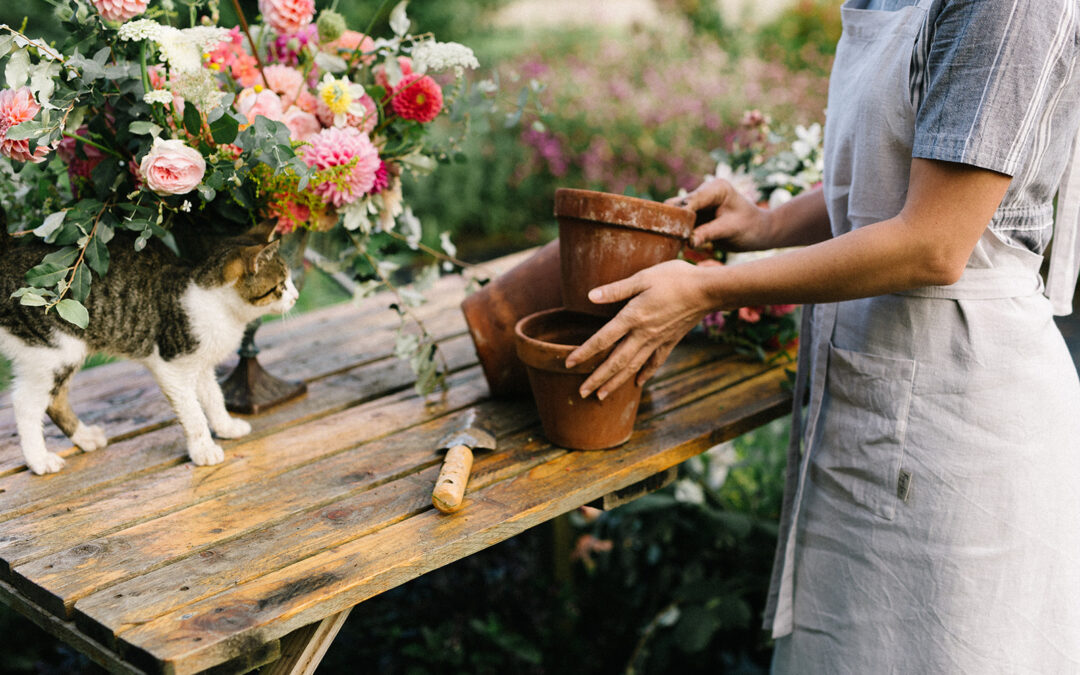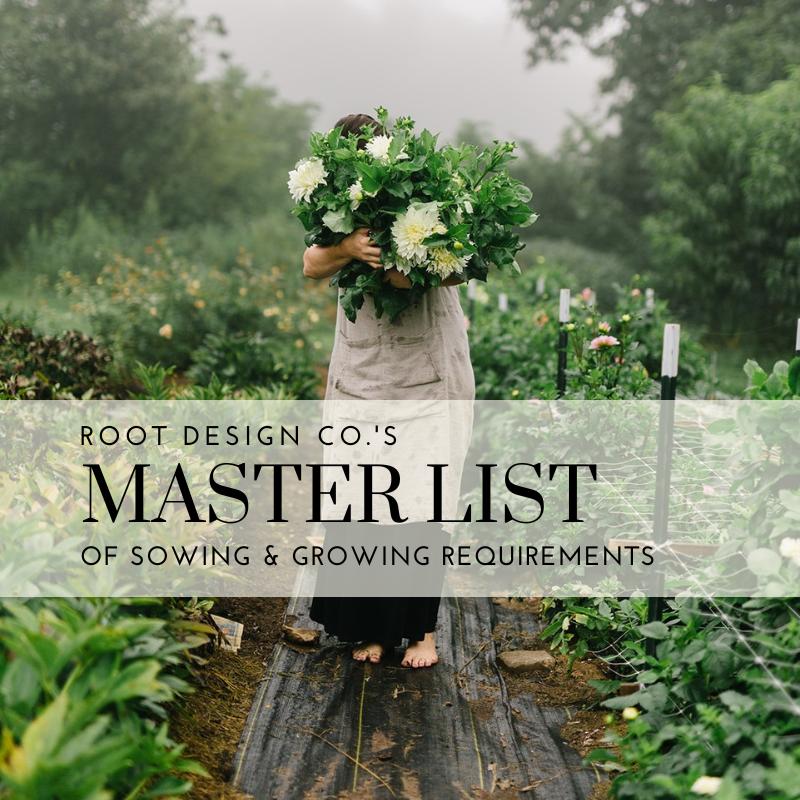When should I start seeds indoors for my cut flower garden (or any garden, for that matter)? The answer depends a lot on your climate, when you want flowers, and on the seeds themselves. No one likes vague answers, so we’re going to get right to it.
In this post I’ll tell you how to determine if you need to start seeds indoors, where to find the information you’ll need, and how to figure out a seed starting schedule. There’s a bit of work to it, but it’s not that complicated. Let me walk you through our process.
Note: A few of the links on this post are affiliate links. If you follow the link and make a purchase, we will receive a small commission at no extra cost to you. See our full disclosure here.
Do I Need to Start Seeds Indoors?
First, decide if you actually do need to start your flower seeds indoors. You may be able to sow them directly in the ground with better results. (For example, sunflowers and cosmos do well with being direct sown.) There are three things to take into consideration here. Do you want early blooms? Do the seeds need extra help germinating? And do the seeds you’re sowing need more time to produce a flower?
Earlier Blooms: Zinnias are a great example of this. They can easily be sown in the ground after the last frost and will germinate pretty well without the extra fuss of starting them indoors. They generally take seventy-five to eighty days to bloom so if you plant them in the middle of May, you’ll probably get flowers around the end of July to the first of August. But let’s say you’d like to sell flower bouquets beginning the first week in July. By starting your zinnias indoors, you can give them about a month’s head start and have blooms ready when you need them.
Germination: Some tiny seeds like snapdragons get lost in the lumpy soil of the garden and may take longer to germinate. Some seeds have sketchy germination rates that will leave you with wasteful gaps in your garden. Eliminate the guesswork by starting them indoors.
Long Time To Bloom: Certain flowers will only set blooms in your zone if you start them indoors. Stock, poppies, and lisianthus are a few that would never bloom for us if we sowed them directly in the ground. These flowers all need a long cool period to get established. I didn’t know this and the first year I planted my stock after the last frost. The plants were short and bushy, and never produced a bloom.
Get to Know Your Seeds
I find it helpful to do some research when I first begin growing a new flower. If Johnny’s Seeds sells that variety, I’ll look up the growing information on their website. I will also consult the backs of the seed packets. And if all else fails, I type the flower name in my google search bar. I want to learn everything I can about how this plant grows. Does it tolerate frost? Is it a warm season annual? Does it need to be cold stratified? Is it best started indoors or sown directly in the ground?
Most websites and catalogs that are selling seeds will tell you how many weeks before the last frost that you should start your seeds indoors. Sometimes they’ll also tell you how many days to maturity. Use this as your guide for when to start seeds indoors. Most seeds will take about 4 to 6 weeks of growing indoors before they are ready to be planted into the garden. NOTE: we always add a week to the seed company’s “days to maturity” because we want them to be good and blooming for our event.
Knowing when to start seeds indoors begins by knowing the plants you’re growing. It’s best to keep all of this information handy in a chart or spreadsheet.
We’ve created a MASTER LIST OF SOWING & GROWING REQUIREMENTS – a chart that organizes snippets of all the growing information we need in one handy spot. At a glance we can see if a flower needs light to germinate, or if it needs to be planted in full sun or part shade. This chart is our best friend in the thick of growing season. And we’ve made it available to you, too!
Find Your Last Frost Date
The next step is to estimate the last frost date for your zone. Many plants will not tolerate frost, so it’s really important not to start those too early. A google search or typing your zip code into the National Gardening Associations website should help you find your last frost date.
Here in Ohio, we always take the full moon into consideration as well. We often get a cold snap around the full moon in May, which is when our last frost typically happens. If there’s a full moon around our last frost date, we’ll just add a week to be safe.
Make a Schedule for When to Start Seeds Indoors
Now that you know your last frost date and how many weeks each flower seed needs to grow inside, it’s time to make a seed starting schedule. Get yourself a calendar and mark your last frost date. Then take your list of flowers to grow and count back the weeks for each variety, writing down the date each should be started indoors. I like to organize these so they’re in numerical order, that way I don’t miss any.
A good plan is half the work. If you want a little more information for planning out your garden, check out this article we wrote on how to plan a cut flower garden.
Experiment and Try New Things
Starting seeds indoors under grow lights is one way of getting a head start on the flower season. But what if you are not ready to commit to growing seedlings inside under lights? Here are a few other ideas you might want to try.
We usually grow our ranunculus in a low tunnel (check out our low tunnel video here). One year we direct sowed a variety of early spring flowers under there as well to see how they’d do: bells of Ireland, bachelor’s buttons, Argentine forget-me-not, agrostemma, and baby’s breath. They all did surprisingly well and bloomed well ahead of the same varieties that we direct sowed or started indoors that year. The one downside is you’ll need to make sure they get enough water under the tunnel, even in cold weather.
Winter sowing in old milk jugs is another fun way to jump start things without grow lights. We’ve found this particularly helpful for some vegetables like onions, lettuce, and spinach. I know there are home gardeners that have grown zinnias, cosmos, and other warm season annuals successfully in them as well and may give that a shot sometime, too.
An alternative to the milk jug that we’ve tried for both warm and cool season annuals is to use a vented high dome. You plant your seeds in a typical 1020 tray with whatever size insert you want (we typically use 1206‘s) and then you set them outside with a high dome and vent it as needed.
In conclusion, first figure out if you need to start your seeds indoors. Then do some research so you know how to grow each variety. Once you’ve done that, find your last frost date and make a seed starting schedule. And don’t be afraid to experiment! The beauty of gardening is that there is no one right way to do it.
Happy Planting!



Such good information. The frost or cold snap around full moon time is something I did not know and will certainly pay attention to it, as I am in kansas zone six. Thanks so much for this informative post.